Category: Intellectual Nourishment

Pediatric malnutrition and the role of parenteral nutrition (PN)
What is pediatric malnutrition?
Malnutrition is a big problem—not just in the U.S. but around the world. According to Dr. Francesco Branca, Director of the Department of Nutrition for Health and Development at the World Health Organization, “Malnutrition is a complex issue, but it is the main cause of death and disease in the world.”1 And it’s no respecter of age. Babies, children, and teenagers can suffer from the detrimental effects of malnutrition.
Some studies have reported that up to 51% of hospitalized pediatric patients suffer from malnutrition due to a disease or injury.2-4
Pediatric malnutrition is defined as “an imbalance between nutrient requirements and intake that results in cumulative deficits of energy, protein, or micronutrients that may negatively affect growth, development, and other relevant outcomes.”5 It may be caused by a disease or injury, which is usually the case in developed countries, and/or it may be caused by environmental, socioeconomic, or behavioral factors that lead to decreased nutrient intake.5 Although pediatric malnutrition is common, “its true prevalence is underreported and not well understood.”6
Babies, children, and teenagers who do not receive the nutrition they need to support adequate growth and development may experience negative consequences. Symptoms may include a thin or bloated appearance or a weakened immune system.7 Patients may also exhibit mood changes, faltering growth, and low energy levels.7,8
What impact does pediatric malnutrition have on patient outcomes?
Malnutrition can lead to adverse outcomes, including longer hospital stays and increased healthcare costs.4,9 Additionally, it can have lasting negative effects on pediatric patients, including stunting, which “often results in delayed mental development, poor school performance, and reduced intellectual capacity.”10
Nourishing pediatric patients with PN
Pediatric patients unable to receive adequate nutrition by mouth or enteral feeding may require PN to meet their nutritional goals.11 PN regimens often include lipid injectable emulsions (ILEs), which provide a noncarbohydrate source of energy and essential fatty acids.12,13
At Fresenius Kabi, we are dedicated to providing more options for patients who need PN.
References: 1. Malnutrition is a world health crisis. World Health Organization website. September 26, 2019. Accessed July 28, 2023. https://www.who.int/news/item/26-09-2019-malnutrition-is-a-world-health-crisis. 2. Hendricks KM, Duggan C, Gallagher L, et al. Malnutrition in hospitalized pediatric patients. Current prevalence. Arch Pediatr Adolesc Med. 1995;149(10):1118-1122. 3. Pawellek I, Dokoupil K, Koletzko B. Prevalence of malnutrition in paediatric hospital patients. Clin Nutr. 2008;27(1):72-76. 4. Secker DJ, Jeejeebhoy KN. Subjective Global Nutritional Assessment for children. Am J Clin Nutr. 2007;85(4):1083-1089. 5. Mehta NM, Corkins MR, Lyman B, et al. Defining pediatric malnutrition: a paradigm shift toward etiology-related definitions. JPEN J Parenter Enteral Nutr. 2013;37(4):460-481. 6. Goldberg DL, Van Poots, HA. Pediatric and Neonatal Malnutrition: A Collaborative, Family-Centered Approach Improves Outcomes. Pediatr Neonatal Nurs Open J. 2019;6(1):e1-e4. 7. Malnutrition. Johns Hopkins Medicine website. Accessed July 24, 2023. https://www.hopkinsmedicine.org/health/conditions-and-diseases/malnutrition 8. Symptoms Malnutrition. NHS website. Last reviewed May 23, 2023. Accessed July 24, 2023. https://www.nhs.uk/conditions/malnutrition/symptoms/ 9. Gambra-Arzoz M, Alonso-Cadenas JA, Jiménez-Legido M, et al. Nutrition Risk in Hospitalized Pediatric Patients: Higher Complication Rate and Higher Costs Related to Malnutrition. Nutr Clin Pract. 2020;35(1):157-163. 10. Malnutrition in children. World Health Organization website. Accessed July 26, 2023. https://www.who.int/data/nutrition/nlis/info/malnutrition-in-children#:~:text=Stuntingistheresultof,productivityatthenationallevel 11. What Is Parenteral Nutrition. ASPEN website. Accessed July 26, 2023. https://www.nutritioncare.org/About_Clinical_Nutrition/What_is_Parenteral_Nutrition/ 12. Lapillonne A, Fidler Mis N, Goulet O, et al. ESPGHAN/ESPEN/ESPR/CSPEN guidelines on pediatric parenteral nutrition: Lipids. Clin Nutr. 2018;37(6 Pt B):2324-2336. 13. Cober MP, Gura KM, Mirtallo JM, et al. ASPEN lipid injectable emulsion safety recommendations part 2: Neonate and pediatric considerations. Nutr Clin Pract. 2021;36(6):1106-1125.

Omega-3s in parenteral nutrition (PN)
The role of lipids in PN
People of all ages, from infants to children to adults, may need PN to help them meet their nutritional goals.1 Protein, carbohydrate, and fat are the 3 main components of PN. These 3 macronutrients are important for the provision of adequate nutrition in patients receiving PN.
Intravenous fats, or lipids, provide a good source of energy-dense, non-protein calories, which may lower the amount of carbohydrate needed as part of nutrition support.2,3
“Lipids provide the building blocks for cell membranes and provide essential fatty acids, thereby preventing essential fatty acid deficiency.”3
Lipid source matters when choosing appropriate lipid injectable emulsions (ILEs) for patients on PN. Fish oil-containing ILEs are a source of omega-3 fatty acids. Let’s dive further into some omega-3 properties and explore innovative PN products that contain this alternative energy source.
Introducing an advancement in PN
Fresenius Kabi is dedicated to delivering more options to healthcare providers and their PN patients. So, in 2016, we introduced fish oil and omega-3s into our PN products, representing a development and advancement for critically ill patients.
Meet our innovative omega-3-containing PN products
We understand that lipid source matters when considering appropriate nutrition for patients. We’re proud to offer two innovative ILEs that deliver fish oil and omega-3s to help nourish patients who need PN. Meet SMOFlipid® (Lipid Injectable Emulsion, USP 20%) and Omegaven® (fish oil triglycerides) injectable emulsion.
With SMOFlipid, Fresenius Kabi answered the call from PN and critical care medical societies for an alternative to soy-based ILEs. This unique blend of 4 oils—soybean oil, medium-chain triglycerides, olive oil, and fish oil—is the first lipid advancement for adults in more than 4 decades. In 2022, it received approval for use in pediatric patients, including term and preterm neonates.4 Today, SMOFlipid is recognized all around the world.
-

Used for more than a decade worldwide
-

Administered to more than 7 million adult and pediatric patients worldwide*
-

Safe and well tolerated5,6
-

The fatty acid ratio is in line with expert recommendations in adults7-10
-

Contains fish oil, which provides a good source of omega-3 fatty acids, including eicosapentaenoic acid (EPA) and docosahexaenoic acid (DHA)11
Omegaven was previously available only for compassionate care. However, Fresenius Kabi saw the need for the product to be more broadly available to pediatric patients and worked hard to secure the necessary clinical evidence to support FDA approval. In 2018, Omegaven became commercially available for pediatric patients with parenteral nutrition-associated cholestasis (PNAC). It’s the FIRST and ONLY PN innovation with 100% fish oil that nurtures.12
-
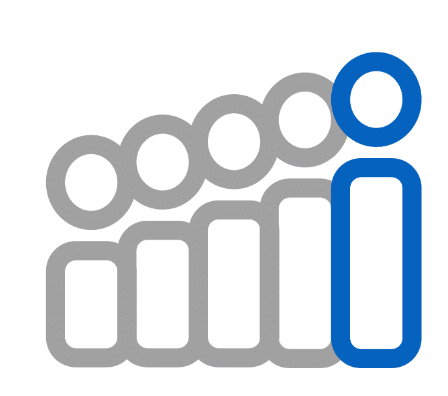
Patients receiving Omegaven achieved age-appropriate growth12
-
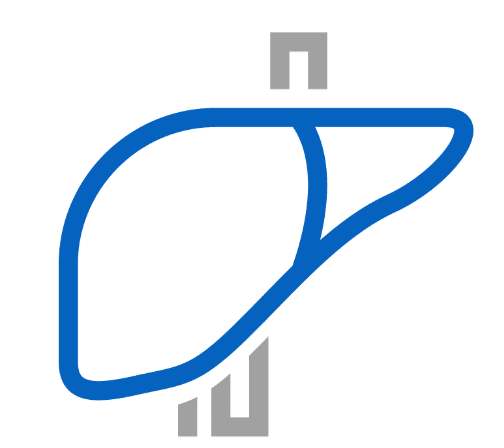
Omegaven-treated patients experienced improvement in liver function parameters12
-
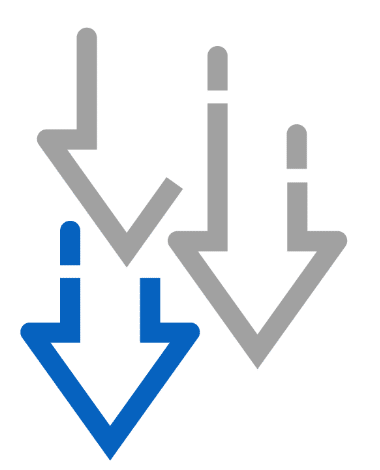
Direct or conjugated bilirubin levels were effectively lowered12
-
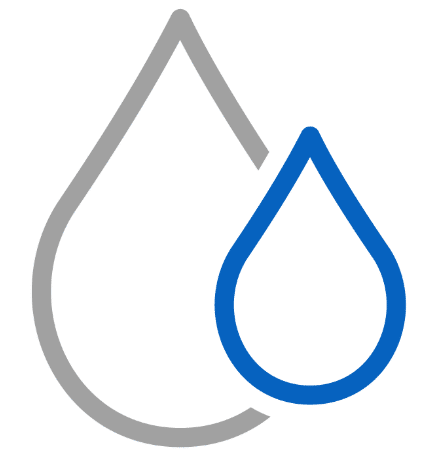
Contains the omega-3 fatty acids EPA and DHA
The development of these two products demonstrates our dedication to caring for life. And we will continue to drive advancements for all patients who need PN.
Learn more about SMOFlipid and Omegaven at www.FreseniusKabiNutrition.com/pn-portfolio/.
INDICATIONS AND USAGE
Omegaven is indicated as a source of calories and fatty acids in pediatric patients with parenteral nutrition-associated cholestasis (PNAC).
Limitations of Use
Omegaven is not indicated for the prevention of PNAC. It has not been demonstrated that Omegaven prevents PNAC in parenteral nutrition (PN)-dependent patients.
It has not been demonstrated that the clinical outcomes observed in patients treated with Omegaven are a result of the omega-6: omega-3 fatty acid ratio of the product.
IMPORTANT SAFETY INFORMATION
Protect the admixed PN solution from light. Prior to administration, correct severe fluid and electrolyte disorders and measure serum triglycerides to establish a baseline level. Initiate dosing in PN-dependent pediatric patients as soon as direct or conjugated bilirubin levels are 2 mg/dL or greater. The recommended nutritional requirements of fat and recommended dosages of Omegaven to meet those requirements for pediatric patients are provided in Table 1, along with recommendations for the initial and maximum infusion rates. Administer Omegaven until direct or conjugated bilirubin levels are less than 2 mg/dL or until the patient no longer requires PN.
Table 1: Recommended Pediatric Dosage and Infusion Rate

Omegaven is contraindicated in patients with known hypersensitivity to fish or egg protein or to any of the active ingredients or excipients, severe hemorrhagic disorders due to a potential effect on platelet aggregation, severe hyperlipidemia or severe disorders of lipid metabolism characterized by hypertriglyceridemia (serum triglyceride concentrations greater than 1,000 mg/dL).
Clinical Decompensation with Rapid Infusion of Lipid Injectable Emulsions in Neonates and Infants: Acute respiratory distress, metabolic acidosis, and death after rapid infusion of intravenous lipid emulsions have been reported. Hypertriglyceridemia was commonly reported. Strictly adhere to the recommended total daily dosage; the hourly infusion rate should not exceed 1.5 mL/kg/hour. Carefully monitor the infant’s ability to eliminate the infused lipids from the circulation (e.g., measure serum triglycerides and/or plasma free fatty acid levels). If signs of poor clearance of lipids from the circulation occur, stop the infusion and initiate a medical evaluation.
Hypersensitivity Reactions: Monitor for signs or symptoms. Discontinue infusion if reaction occurs.
Infections, Fat Overload Syndrome, Refeeding Syndrome, and Hypertriglyceridemia: Monitor for signs and symptoms; monitor laboratory parameters.
Aluminum Toxicity: Increased risk in patients with renal impairment, including preterm infants.
Monitoring and Laboratory Tests: Routine laboratory monitoring is recommended, including monitoring for essential fatty acid deficiency.
The most common adverse drug reactions (>15%) are: vomiting, agitation, bradycardia, apnea and viral infection.
To report SUSPECTED ADVERSE REACTIONS, contact Fresenius Kabi USA, LLC at 1-800-551-7176, option 5, or FDA at 1-800-FDA-1088 or www.fda.gov/medwatch.
This Important Safety Information does not include all the information needed to use Omegaven safely and effectively. Please see full prescribing information for Omegaven (fish oil triglycerides) injectable emulsion for intravenous use at www.FreseniusKabiNutrition.com/OmegavenPI.
INDICATIONS AND USAGE
SMOFlipid is indicated in adult and pediatric patients, including term and preterm neonates, as a source of calories and essential fatty acids for parenteral nutrition (PN) when oral or enteral nutrition is not possible, insufficient, or contraindicated.
IMPORTANT SAFETY INFORMATION
For intravenous infusion only into a central or peripheral vein. Use a non-vented non-DEHP 1.2 micron in-line filter set during administration. Recommended dosage depends on age, energy expenditure, clinical status, body weight, tolerance, ability to metabolize and eliminate lipids, and consideration of additional energy given to the patient. The recommended dose for adults and pediatrics is shown in Table 1. For information on age-appropriate infusion rate, see the full prescribing information. SMOFlipid Pharmacy Bulk Package is only indicated for use in pharmacy admixture programs for the preparation of three-in-one or total nutrition admixtures. Protect the admixed PN solution from light.
Table 1: Recommended Adult and Pediatric Dosage
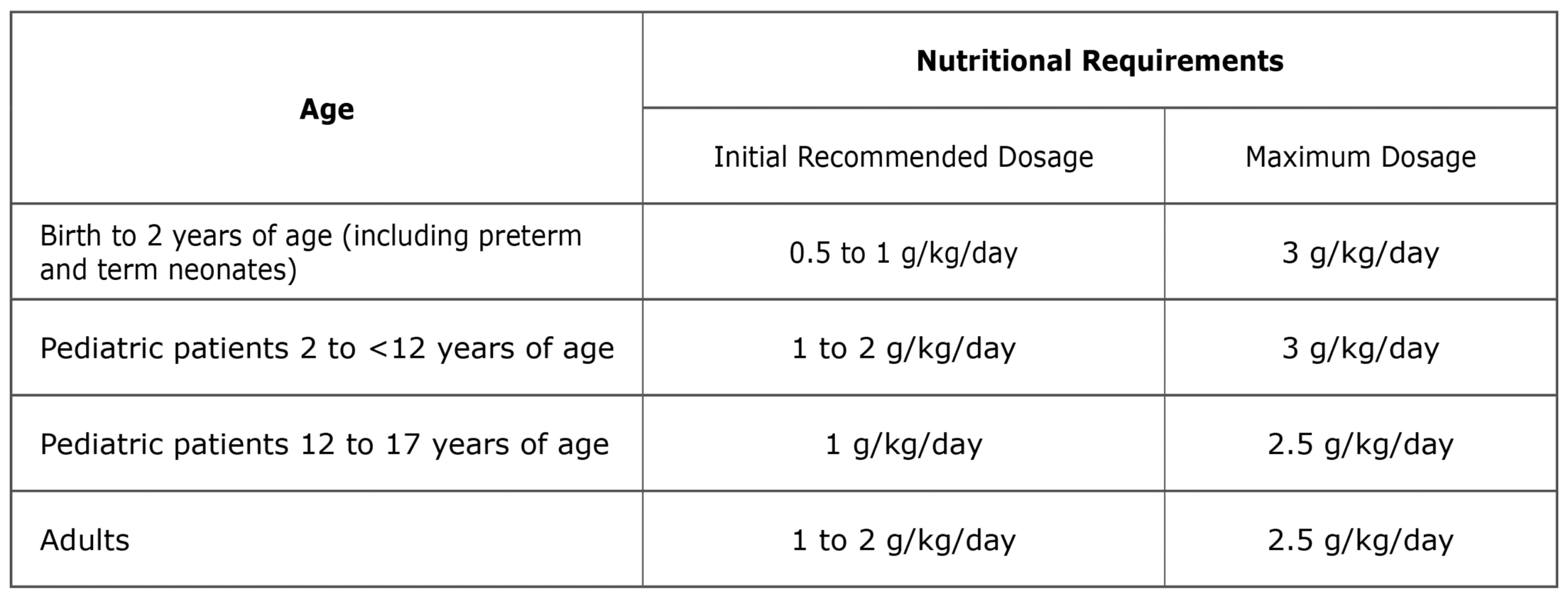
SMOFlipid is contraindicated in patients with known hypersensitivity to fish, egg, soybean, peanut, or any of the active or inactive ingredients, and severe disorders of lipid metabolism characterized by hypertriglyceridemia (serum triglycerides >1,000 mg/dL).
Clinical Decompensation with Rapid Infusion of Intravenous Lipid Emulsion in Neonates and Infants: Acute respiratory distress, metabolic acidosis, and death after rapid infusion of intravenous lipid emulsions have been reported.
Parenteral Nutrition-Associated Liver Disease: Increased risk in patients who received parenteral nutrition for greater than 2 weeks, especially preterm neonates. Monitor liver tests; if abnormalities occur consider discontinuation or dosage reduction.
Hypersensitivity Reactions: Monitor for signs or symptoms. Discontinue infusion if reactions occur.
Risk of Infections, Fat Overload Syndrome, Refeeding Syndrome, Hypertriglyceridemia, and Essential Fatty Acid Deficiency: Monitor for signs and symptoms; monitor laboratory parameters.
Aluminum Toxicity: Increased risk in patients with renal impairment, including preterm neonates.
Most common adverse drug reactions (≥5%) from clinical trials in adults were nausea, vomiting, and hyperglycemia. Most common adverse drug reactions (≥5%) from clinical trials in pediatric patients were anemia, vomiting, increased gamma-glutamyltransferase, and nosocomial infection.
To report SUSPECTED ADVERSE REACTIONS, contact Fresenius Kabi USA, LLC at 1-800-551-7176, option 5, or FDA at 1-800-FDA-1088 or www.fda.gov/medwatch.
This Important Safety Information does not include all the information needed to use SMOFlipid safely and effectively. Please see full prescribing information, for intravenous use at www.FreseniusKabiNutrition.com/SMOFlipidPI.
*Data on file.
References: 1. ASPEN. What is parenteral nutrition. ASPEN website. https://www.nutritioncare.org/About_Clinical_Nutrition/What_is_Parenteral_Nutrition/. Accessed June 21, 2023. 2. Raman M, Almutairdi A, Mulesa L, Alberda C, Beattie C, Gramlich L. Parenteral Nutrition and Lipids. Nutrients. 2017;9(4):388. 3. Calder PC, Adolph M, Deutz NE, et al. Lipids in the intensive care unit: Recommendations from the ESPEN Expert Group. Clin Nutr. 2018;37(1):1-18. 4. SMOFlipid Prescribing Information, Fresenius Kabi USA, LLC. 2023. 5. Klek S, Chambrier C, Singer P, et al. Four-week parenteral nutrition using a third generation lipid emulsion (SMOFlipid)—a double-blind, randomised, multicentre study in adults. Clin Nutr. 2013;32(2):224-231. 6. Mertes N, Grimm H, Fürst P, Stehle P. Safety and efficacy of a new parenteral lipid emulsion (SMOFlipid) in surgical patients: a randomized, double-blind, multicenter study. Ann Nutr Metab. 2006;50(3):253-259. 7. Grimble RH. Fatty acid profile of modern lipid emulsions: scientific consideration for creating the ideal composition. Clin Nutr Suppl. 2005;1(3):9-15. 8. Waitzberg DL, Torrinhas RS, Jacintho TM. New parenteral lipid emulsions for clinical use. JPEN J Parenter Enteral Nutr. 2006;30(4):351-367. 9. Mayer K, Schaefer MB, Seeger W. Fish oil in the critically ill: from experimental to clinical data. Curr Opin Clin Nutr Metab Care. 2006;9(2):140-148. 10. Grimm H, Mertes N, Goeters C, et al. Improved fatty acid and leukotriene pattern with a novel lipid emulsion in surgical patients. Eur J Nutr. 2006;45(1):55-60. 11. Kalish BT, Fallon EM, Puder M. A tutorial on fatty acid biology. JPEN J Parenter Enteral Nutr. 2012;36(4):380-388. 12. Omegaven Prescribing Information, Fresenius Kabi USA, LLC. 2023.
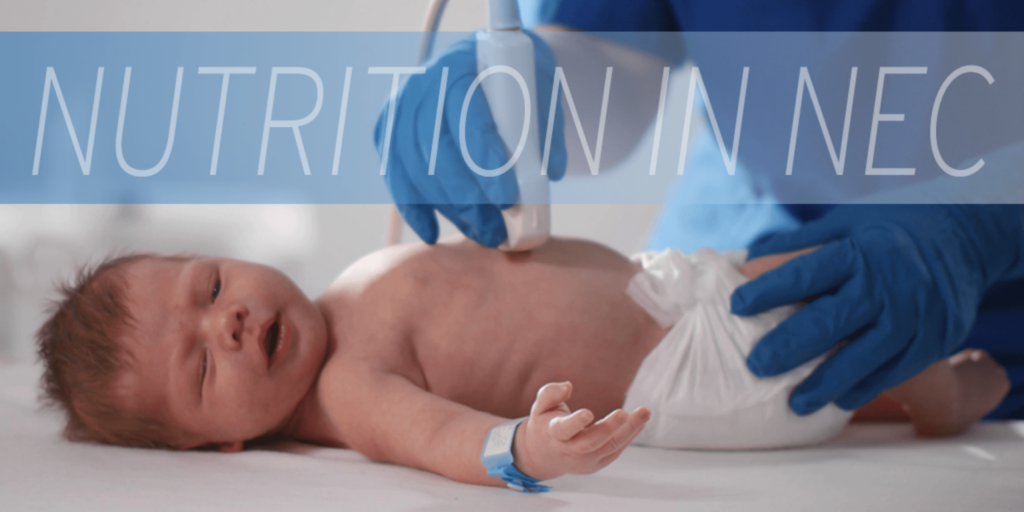
Nutrition in NEC: what are your options?
Babies who are born too soon are vulnerable to the development of serious health conditions like necrotizing enterocolitis (NEC), an intestinal disease that affects babies during their first weeks and months of life.1,2 It’s a complicated disease in which the tissues of the intestines become necrotic, potentially leading to peritonitis, sepsis, and even death.3
“NEC affects 2% to 5% of all premature infants and is responsible for nearly 8% of all NICU admissions.”3
What causes NEC?
When the intestinal lining is damaged and torn, the bacteria that’s inside the intestine can enter the peritoneum and bloodstream, resulting in infection.2,3 Preemies, very low birth weight babies, and formula-fed babies are especially at risk for developing NEC; however, the disease can also affect full-term babies, particularly those who are born with a hypoxic medical condition such as a cyanotic congenital heart defect.3
While many babies fully recover from the disease without any further complications, some may face long-term challenges with cognition, muscle function, and intestinal function.3,4 And unfortunately, death can occur in 10-50% of babies who develop this devastating disease.1,3
What are the signs that a baby may have NEC?
A baby may present with the following nonspecific signs and symptoms3:
- Swollen belly
- Decreased activity
- Appetite loss
- Vomiting
- Diarrhea
- Bloody stools
As NEC gets worse, a baby can experience respiratory and circulatory problems and may even become unresponsive.3
How is NEC treated?
Treatment of NEC involves stopping all feedings by mouth and maintaining NPO status, or “nothing by mouth.”3 A nasogastric tube is placed to decompress the dilated bowels and intravenous (IV) broad-spectrum antibiotics are started.3 Some babies may require surgical removal of the affected portion of the intestine.3
When babies with NEC are unable to receive nutrition by mouth, parenteral nutrition (PN) should be initiated to help nourish these vulnerable patients.3
Nourishing tiny patients with PN
As the U.S. market leader in lipid injectable emulsions (ILEs),* we have two solutions that are approved for use in even the youngest PN patients to help them meet their nutritional needs. What’s unique about these two solutions is that they both contain fish oil that provides omega-3 fatty acids.
Our FIRST and ONLY 4-oil lipid injectable emulsion (ILE), SMOFlipid, has demonstrated safety and tolerability5,6 in more than 7 million adult and pediatric patients worldwide.* SMOFlipid is the only PN innovation with a unique blend of 4 oils to nourish patients of all ages, including the smallest patients.7
SMOFlipid helps to nurture growth in pediatric patients.7-10
Parenteral nutrition-associated cholestasis (PNAC) is a significant complication that develops among pediatric patients who require long-term PN,11 which can be the case for some patients who have NEC.3 In addition, premature birth, low birth weight, intestinal failure secondary to NEC, and active recovery from surgical NEC can increase a baby’s risk for developing PNAC.11-15
Omegaven is the FIRST and ONLY PN innovation with 100% fish oil that nurtures pediatric patients with PNAC.16 It was previously available only for compassionate care, but Fresenius Kabi saw the need for the product to be more broadly available to pediatric patients and worked hard to secure FDA approval in 2018.
The omega-3 fatty acids EPA and DHA are considered to be important for the healthy development of infants due to their special physiological roles.17,18
A tireless dedication to driving advancements in clinical nutrition has allowed us to deliver more options to you and your most delicate PN patients. We will continue to build on our history of innovation in clinical nutrition to further the field for all patients on PN. Learn more about our innovations that nourish pediatric patients at www.FreseniusKabiNutrition.com/pn-portfolio/.
INDICATIONS AND USAGE
Omegaven is indicated as a source of calories and fatty acids in pediatric patients with parenteral nutrition-associated cholestasis (PNAC).
Limitations of Use
Omegaven is not indicated for the prevention of PNAC. It has not been demonstrated that Omegaven prevents PNAC in parenteral nutrition (PN)-dependent patients.
It has not been demonstrated that the clinical outcomes observed in patients treated with Omegaven are a result of the omega-6: omega-3 fatty acid ratio of the product.
IMPORTANT SAFETY INFORMATION
Protect the admixed PN solution from light. Prior to administration, correct severe fluid and electrolyte disorders and measure serum triglycerides to establish a baseline level. Initiate dosing in PN-dependent pediatric patients as soon as direct or conjugated bilirubin levels are 2 mg/dL or greater. The recommended daily dose (and the maximum dose) in pediatric patients is 1 g/kg/day. Administer Omegaven until direct or conjugated bilirubin levels are less than 2 mg/dL or until the patient no longer requires PN.
Omegaven is contraindicated in patients with known hypersensitivity to fish or egg protein or to any of the active ingredients or excipients, severe hemorrhagic disorders due to a potential effect on platelet aggregation, severe hyperlipidemia or severe disorders of lipid metabolism characterized by hypertriglyceridemia (serum triglyceride concentrations greater than 1,000 mg/dL).
Risk of Death in Preterm Infants due to Pulmonary Lipid Accumulation: Deaths in preterm infants after infusion of soybean oil-based intravenous lipid emulsions have been reported in medical literature. Autopsy findings in these preterm infants included intravascular lipid accumulation in the lungs. The risk of pulmonary lipid accumulation with Omegaven is unknown. Preterm and small-for-gestational-age infants have poor clearance of intravenous lipid emulsion and increased free fatty acid plasma levels following lipid emulsion infusion. This risk due to poor lipid clearance should be considered when administering intravenous lipid emulsions. Monitor patients receiving Omegaven for signs and symptoms of pleural or pericardial effusion.
Hypersensitivity Reactions: Monitor for signs or symptoms. Discontinue infusion if reaction occurs.
Risk of Infections, Fat Overload Syndrome, Refeeding Syndrome, and Hypertriglyceridemia: Monitor for signs and symptoms; monitor laboratory parameters.
Aluminum Toxicity: Increased risk in patients with renal impairment, including preterm infants.
Monitoring and Laboratory Tests: Routine laboratory monitoring is recommended, including monitoring for essential fatty acid deficiency.
The most common adverse drug reactions (>15%) are: vomiting, agitation, bradycardia, apnea and viral infection.
To report SUSPECTED ADVERSE REACTIONS, contact Fresenius Kabi USA, LLC at 1-800-551-7176, option 5, or FDA at 1-800-FDA-1088 or www.fda.gov/medwatch.
This Important Safety Information does not include all the information needed to use Omegaven safely and effectively. Please see full prescribing information for Omegaven (fish oil triglycerides) injectable emulsion for intravenous use at www.freseniuskabinutrition.com/OmegavenPI.
INDICATIONS AND USAGE
SMOFlipid is indicated in adult and pediatric patients, including term and preterm neonates, as a source of calories and essential fatty acids for parenteral nutrition (PN) when oral or enteral nutrition is not possible, insufficient, or contraindicated.
IMPORTANT SAFETY INFORMATION
For intravenous infusion only into a central or peripheral vein. Use a non-vented non-DEHP 1.2 micron in-line filter set during administration. Recommended dosage depends on age, energy expenditure, clinical status, body weight, tolerance, ability to metabolize and eliminate lipids, and consideration of additional energy given to the patient. The recommended daily dosage in adults is 1 to 2 grams/kg per day and should not exceed 2.5 grams/kg per day. The recommended dose for pediatrics is shown in Table 1, and do not exceed an infusion rate of 0.15 g/kg/hour. SMOFlipid Pharmacy Bulk Package is only indicated for use in pharmacy admixture programs for the preparation of three-in-one or total nutrition admixtures. Protect the admixed PN solution from light.
Table 1: Recommended Pediatric Dosage
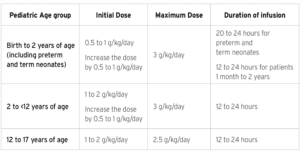
SMOFlipid is contraindicated in patients with known hypersensitivity to fish, egg, soybean, or peanut protein, or to any of the active ingredients or inactive ingredients, and severe disorders of lipid metabolism characterized by hypertriglyceridemia (serum triglycerides > 1,000 mg/dL).
Parenteral Nutrition-Associated Liver Disease: Increased risk in patients who received parenteral nutrition for greater than 2 weeks, especially preterm neonates. Monitor liver tests, if abnormalities occur consider discontinuation or dosage reduction.
Risk of Death in Preterm Infants due to Pulmonary Lipid Accumulation: Deaths in preterm infants after infusion of intravenous 100% soybean oil lipid emulsions have been reported in the literature.
Hypersensitivity Reactions: Monitor for signs or symptoms. Discontinue infusion if reactions occur.
Risk of Infections, Fat Overload Syndrome, Refeeding Syndrome, Hypertriglyceridemia, and Essential Fatty Acid Deficiency: Monitor for signs and symptoms; monitor laboratory parameters.
Aluminum Toxicity: Increased risk in patients with renal impairment, including preterm neonates.
Most common adverse drug reactions (≥5%) from clinical trials in adults were nausea, vomiting, and hyperglycemia. Most common adverse drug reactions (≥5%) from clinical trials in pediatric patients were anemia, vomiting, increased gamma-glutamyltransferase and nosocomial infection.
To report SUSPECTED ADVERSE REACTIONS, contact Fresenius Kabi USA, LLC at 1-800-551-7176, option 5, or FDA at 1-800-FDA-1088 or www.fda.gov/medwatch.
This Important Safety Information does not include all the information needed to use SMOFlipid safely and effectively. Please see full prescribing information, for intravenous use at www.freseniuskabinutrition.com/SMOFlipidPI.
*Data on file.
References: 1. NEC Awareness Month. NEC Society. Accessed April 12, 2023. https://necsociety.org/nec-awareness-month/ 2. What is necrotizing enterocolitis (NEC)?. NEC Society. Accessed April 19, 2023. https://necsociety.org/wp-content/uploads/2023/03/WHAT-IS-NEC-for-families-2023-1.pdf 3. Ginglen JG, Butki N. Necrotizing Enterocolitis. In: StatPearls. Treasure Island (FL): StatPearls Publishing; August 8, 2022. 4. Rees CM, Pierro A, Eaton S. Neurodevelopmental outcomes of neonates with medically and surgically treated necrotizing enterocolitis. Arch Dis Child Fetal Neonatal Ed. 2007;92(3):F193-F198. 5. Klek S, Chambrier C, Singer P, et al. Four-week parenteral nutrition using a third generation lipid emulsion (SMOFlipid)—a double-blind, randomised, multicentre study in adults. Clin Nutr. 2013;32(2):224-231. 6. Mertes N, Grimm H, Fürst P, Stehle P. Safety and efficacy of a new parenteral lipid emulsion (SMOFlipid) in surgical patients: a randomized, double-blind, multicenter study. Ann Nutr Metab. 2006;50(3):253-259. 7. SMOFlipid Prescribing Information, Fresenius Kabi USA, LLC. 2023. 8. Vlaardingerbroek H, Vermeulen MJ, Carnielli VP, Vaz FM, van den Akker CH, van Goudoever JB. Growth and fatty acid profiles of VLBW infants receiving a multicomponent lipid emulsion from birth. J Pediatr Gastroenterol Nutr. 2014;58(4):417-427. 9. Rayyan M, Devlieger H, Jochum F, Allegaert K. Short-term use of parenteral nutrition with a lipid emulsion containing a mixture of soybean oil, olive oil, medium-chain triglycerides, and fish oil: a randomized double-blind study in preterm infants. JPEN J Parenter Enteral Nutr. 2012;36(1 Suppl):81S-94S. 10. Ariyawangso U, Puttilerpong C, Ratanachu-ek S, Anuntkosol M. Short-term safety and efficacy of fish-oil emulsions on the prevention of parenteral nutrition-associated liver disease in surgical neonates: a randomized controlled trial. Thai J Pharmac Sci. 2014;38(4):156-209. 11. Lauriti G, Zani A, Aufieri R, et al. Incidence, prevention, and treatment of parenteral nutrition-associated cholestasis and intestinal failure-associated liver disease in infants and children: a systematic review. JPEN J Parenter Enteral Nutr. 2014;38(1):70-85. 12. Lacaille F, Gupte G, Colomb V, et al. Intestinal failure-associated liver disease: a position paper of the ESPGHAN Working Group of Intestinal Failure and Intestinal Transplantation. J Pediatr Gastroenterol Nutr. 2015;60(2):272-283. 13. Wales PW, Allen N, Worthington P, et al. A.S.P.E.N. clinical guidelines: support of pediatric patients with intestinal failure at risk of parenteral nutrition-associated liver disease. JPEN J Parenter Enteral Nutr. 2014;38(5):538-557. 14. Orso G, Mandato C, Veropalumbo C, Cecchi N, Garzi A, Vajro P. Pediatric parenteral nutrition-associated liver disease and cholestasis: Novel advances in pathomechanisms-based prevention and treatment. Dig Liver Dis. 2016;48(3):215-222. 15. Satrom K, Gourley G. Cholestasis in Preterm Infants. Clin Perinatol. 2016;43(2):355-373. 16. Omegaven Prescribing Information, Fresenius Kabi USA, LLC. 2023. 17. Agostoni C. Role of long-chain polyunsaturated fatty acids in the first year of life. J Pediatr Gastroenterol Nutr. 2008;47 Suppl 2:S41-44. 18. Cetin I, Koletzko B. Long-chain omega-3 fatty acid supply in pregnancy and lactation. Curr Opin Clin Nutr Metab Care. 2008;11(3):297-302.
4127-OMEG-08-05/23
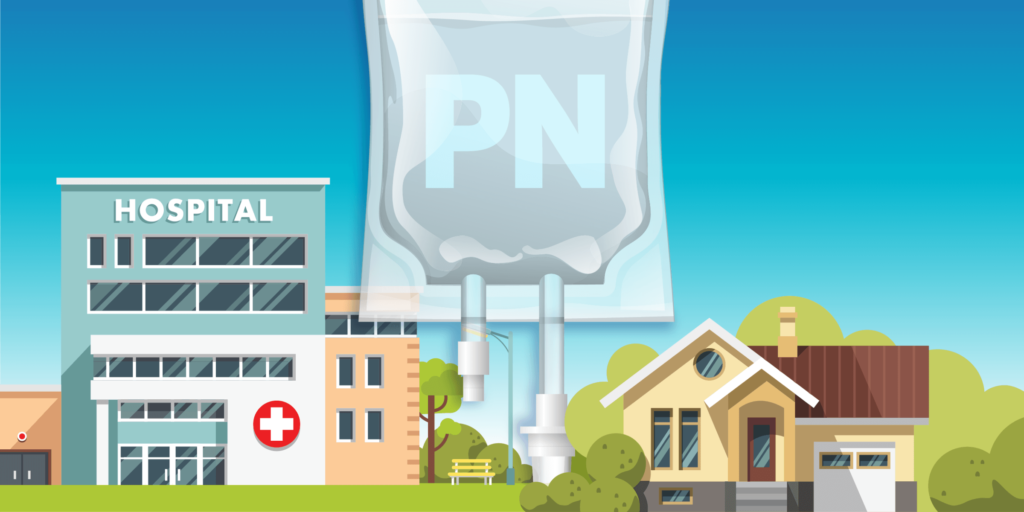
Parenteral nutrition (PN): from hospital to home
Transforming the delivery of healthcare
Many people, especially those living in rural areas, must drive long distances to receive care at their nearest medical clinic or hospital. This has been an issue for years—one that has forced thinking to become more consumer-centric.1 Then, the pandemic in 2020 accelerated this way of thinking into action. Telehealth—or telemedicine—has been around for years but not widely used. Now, telehealth is becoming increasingly available, forever transforming the delivery of healthcare.
According to an Issue Brief by the Assistant Secretary for Planning and Evaluation, nearly half of Medicare primary care visits were provided via telehealth in April 2020, compared with less than 1% in February 2020.2
Use of telehealth in rural areas
Telehealth changes the equation for so many people, as they now have access to healthcare no matter where they live. It also brings forth the opportunity to transform the economics of rural hospitals and remote communities.1 How?
Before the turn of the decade, 120 rural hospitals were forced to close their doors while a quarter of the survivors remained at high risk for closing.3
Specialists, including neonatologists, neurologists, and cardiologists, are available to rural hospitals via telehealth; this allows patients to receive care without being transferred to a larger facility that’s located farther away.1 In turn, the rural hospital receives most of the compensation, which strengthens its economy.1
Telehealth’s impact on home PN (HPN) patients
Telehealth services have been utilized by patients for years, including those receiving PN at home. It allows for one-on-one visits with a provider who can obtain a thorough history and observe a patient’s home environment.4 Home supplies and equipment setup for HPN may also be evaluated, which has the potential to prevent readmissions and infections.5 Telehealth also allows for easy coordination of group visits and continued group education.4
One study showed that remote video consultations saved time and miles traveled for patients living far from their medical center, which allowed for improved visit attendance.6 And a quality improvement initiative of early post-discharge telemedicine visits involving 26 pediatric HPN patients showed that a telehealth provider helped families recognize early challenges associated with learning or harmful situations.5
Barriers to receiving telehealth care at home
While telehealth visits provide additional services that may be missed in traditional outpatient visits, there are some challenges to receiving care at home, including fragmented insurance coverage, in-state medical licensure requirements, established in-person physician-patient relationships, completion of telemedicine-specific informed consent forms, and reliable internet and communications devices.7,8 In the opinion of Raphael et al, despite these challenges, more hospitals, payers, accreditors, and families are looking to telehealth visits for managing PN at home.5
Nourishing PN patients—from hospital to home
As pioneers in clinical nutrition, our innovations nourish at every age and stage of life—from hospital to home. We are proud to have developed the first and only three-chamber bag for adult PN in the U.S., which can be conveniently stored and dispensed by a pharmacy anytime, including nights and weekends. Learn more about how we can help you help your HPN patients flourish with our innovations that nourish at www.FreseniusKabiNutrition.com/pn-portfolio/.
3806-NP-08-02/23

Nutrition support for the critically ill is critical
How does malnutrition impact critically ill patients?
Several studies have observed a relationship between malnutrition and increased risk of mortality, infections, hospital length of stay.1-8 And unfortunately, many critically ill patients—those with cancer, Crohn’s disease, and short bowel syndrome just to name a few—often become malnourished. These conditions can affect their digestive system or interrupt their bowel function for a long time—or indefinitely. When this happens, clinical nutrition is needed to adequately nourish these patients.
More than 30% of patients in the intensive care unit have been reported to be malnourished.9
PN in critical care
Many critically ill patients cannot tolerate food by mouth or enteral feedings. In these cases, PN plays a crucial role in helping them meet their nutritional goals. In addition to amino acids, lipids, and dextrose, essential fatty acids (EFAs) are…well…essential to providing optimal nutrition.
The good news is that most lipid-based PN products provide EFAs. Lipid sources used in PN include soybean oil, medium-chain triglycerides (MCTs), olive oil, and fish oil. With SMOFlipid® (Lipid Injectable Emulsion, USP 20%), you get all four—each with a unique characteristic.
-

What makes SMOFlipid (Lipid Injectable Emulsion, USP 20%) unique?
SMOFlipid is the FIRST and ONLY four-oil lipid injectable emulsion (ILE) with demonstrated safety and tolerability10,11 in more than 7 million patients worldwide.* This unique combination of oils provides a balanced blend for critically ill patients of all ages—from adults to teenagers to preterm neonates.12
*Data on file.
What are the benefits of the blend?
-
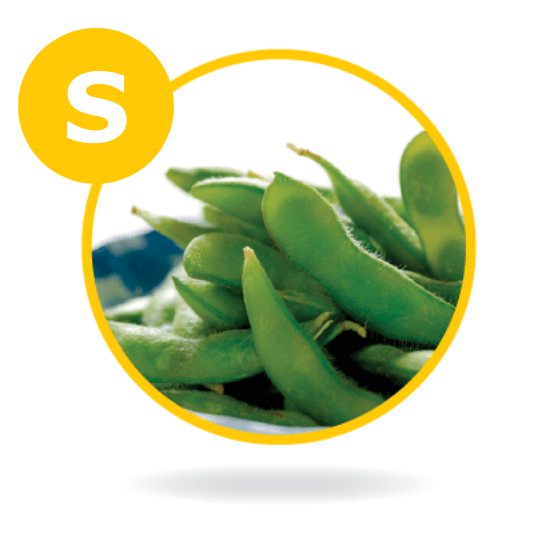
Soybean oil 30% (omega-6)
Provides essential fatty acids.
-
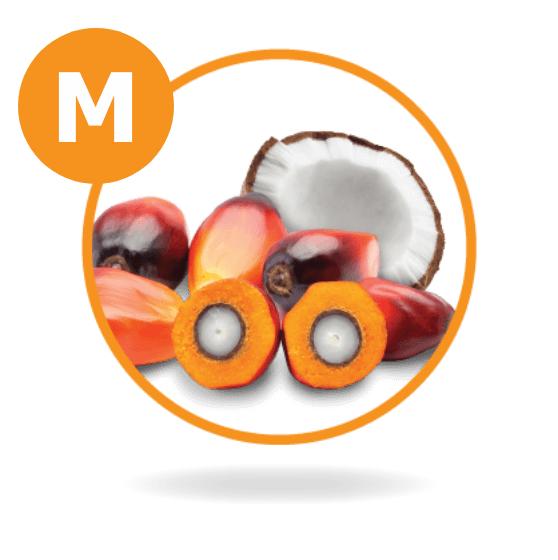
Medium-chain triglycerides 30%
A source of rapidly available energy.13
-
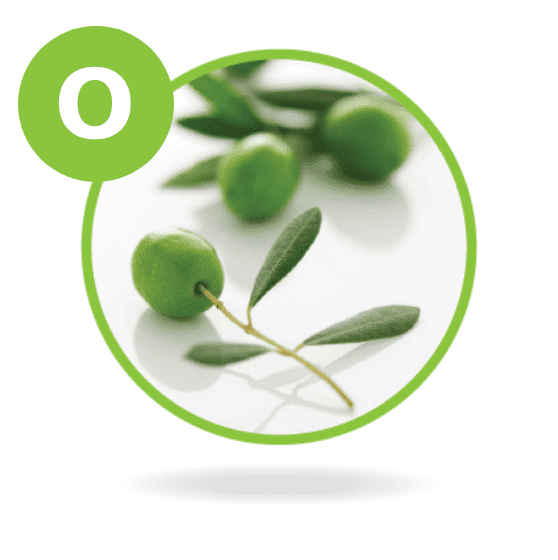
Olive oil 25% (omega-9)
Supplies monounsaturated fatty acids.
-
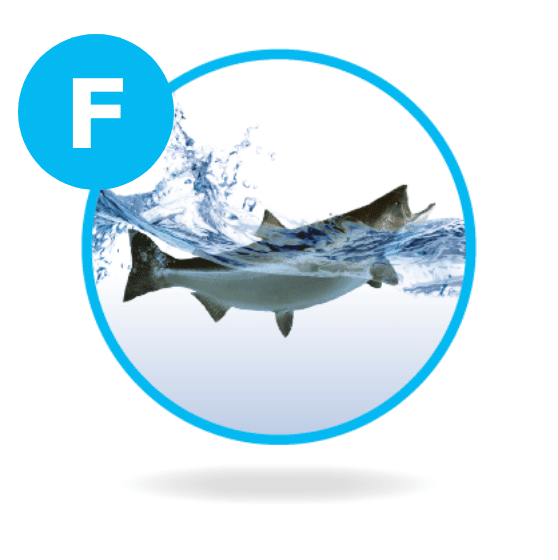
Fish oil 15% (omega-3)
A source of EPA
and DHA.14
Studies showed triglyceride levels increased less with SMOFlipid compared to lipid emulsions with higher soybean oil content in adults.15,16
Triglyceride Change After 5 Days

Study Takeaway
In this randomized controlled trial including postoperative surgical ICU adult patients (n=20), SMOFlipid demonstrated a lower triglyceride increase compared to those patients who received a lipid emulsion (1.5 g/kg/d ILE dose in both groups) with a higher soybean oil content.15
Monitor serum triglycerides before and during treatment with SMOFlipid. Company-sponsored studies showed that mean triglyceride levels from baseline values to week 4 were similar in both the SMOFlipid and comparator groups.
In pediatric patients, SMOFlipid has been shown to support growth and provides essential fatty acids.12,17,18
With SMOFlipid, Fresenius Kabi answered the call from PN and critical care medical societies for an alternative to soy-based ILEs.
As pioneers in clinical nutrition, Fresenius Kabi is committed to bringing innovations like SMOFlipid to market. Learn more about this unique 4-oil ILE and how it can help nourish your critically ill patients of any age at www.FreseniuKabiNutrition.com/products/smoflipid-adults/
SMOFLIPID (lipid injectable emulsion), for intravenous use
BRIEF SUMMARY OF PRESCRIBING INFORMATION
This brief summary does not include all the information needed to use SMOFlipid safely and effectively. Please see full prescribing information for intravenous use at www.FreseniusKabiNutrition.com/SMOFlipidPI.
INDICATIONS AND USAGE
SMOFlipid is indicated in adult and pediatric patients, including term and preterm neonates, as a source of calories and essential fatty acids for parenteral nutrition (PN) when oral or enteral nutrition is not possible, insufficient, or contraindicated.
DOSAGE AND ADMINISTRATION
The recommended daily dosage and initial and maximum infusion rates for pediatric and adult patients are provided in Table 1. Do not exceed the recommended maximum infusion rate in Table 1. The recommended duration of infusion for SMOFlipid will vary depending on the clinical situation. Adjust the administration flow rate by taking into account the dose being administered, the daily volume/intake, and the duration of the infusion.
SMOFlipid 1000 mL is supplied as a Pharmacy Bulk Package for admixing only and is not for direct infusion. Prior to administration, transfer to a separate PN container for individual patient use. Use a non-vented, non-DEHP 1.2 micron in-line filter during administration. Protect the admixed PN solution from light.
Table 1: Recommended Pediatric and Adult Dosage and Infusion Rate
| Age | Nutritional Requirements | Direct Infusion Rate | |
|---|---|---|---|
| Recommended Initial Dosage and Maximum Dosage | Initial | Maximum | |
| Birth to 2 years of age (including preterm and term neonates*) | Initial 0.5 to 1 g/kg/day not to exceed 3 g/kg/day** |
0.1 to 0.2 mL/kg/hour for the first 15 to 30 minutes; gradually increase to the required rate after 30 minutes | 0.75 mL/kg/hour |
| Pediatric patients 2 to <12 years of age | Initial 1 to 2 g/kg/day not to exceed 3 g/kg/day** |
0.2 to 0.4 mL/kg/hour for the first 15 to 30 minutes; gradually increase to the required rate after 30 minutes | 0.75 mL/kg/hour |
| Pediatric patients 12 to 17 years of age | Initial 1 g/kg/day not to exceed 2.5 g/kg/day** |
0.2 to 0.4 mL/kg/hour for the first 15 to 30 minutes; gradually increase to the required rate after 30 minutes | 0.75 mL/kg/hour |
| Adults | 1 to 2 g/kg/day not to exceed 2.5 g/kg/day** |
0.2 mL/kg/hour for the first 15 to 30 minutes; gradually increase to the required rate after 30 minutes | 0.5 mL/kg/hour |
*The neonatal period is defined as including term, post-term, and preterm newborn infants. The neonatal period for term and post-term infants is the day of birth plus 27 days. For preterm infants, the neonatal period is defined as the day of birth through the expected age of delivery plus 27 days (i.e., 44 weeks post-menstrual age).
** Daily dosage should not exceed a maximum of 60% of total energy requirements
CONTRAINDICATIONS
- Known hypersensitivity to fish, egg, soybean, peanut or to any of the active or inactive ingredients in SMOFlipid.
- Severe disorders of lipid metabolism characterized by hypertriglyceridemia (serum triglycerides >1,000 mg/dL).
WARNINGS AND PRECAUTIONS
-
Clinical Decompensation with Rapid Infusion of Intravenous Lipid Emulsion in Neonates and Infants.
In the postmarketing setting, serious adverse reactions including acute respiratory distress, metabolic acidosis, and death have been reported in neonates and infants after rapid infusion of intravenous lipid emulsions. Hypertriglyceridemia was commonly reported.
Strictly adhere to the recommended total daily dosage; the hourly infusion rate should not exceed 0.75 mL/kg/hour.
Preterm and small for gestational age infants have poor clearance of intravenous lipid emulsion and increased free fatty acid plasma levels following lipid emulsion infusion.
Carefully monitor the infant’s ability to eliminate the infused lipids from the circulation (e.g., measure serum triglycerides and/or plasma free fatty acid levels). If signs of poor clearance of lipids from the circulation occur, stop the infusion and initiate a medical evaluation.
-
Parenteral Nutrition-Associated Liver Disease and Other Hepatobiliary Disorders.
Risk of Parenteral Nutrition-Associated Liver Disease (PNALD): PNALD, or Intestinal failure-associated liver disease (IFALD), can present as cholestasis or hepatic stenosis and may progress to steatohepatitis with fibrosis and cirrhosis (possibly leading to chronic hepatic failure). The etiology of PNALD is multifactorial; however, intravenously administered phytosterols (plant sterols) contained in plant-derived lipid emulsions, including SMOFlipid, have been associated with development of PNALD.
In a randomized study of neonates and infants expected to be treated with PN for at least 28 days, parenteral nutrition-associated cholestasis (PNAC), a precursor to PNALD, developed less frequently in SMOFlipid-treated patients than in 100% soybean oil lipid emulsion-treated patients.
Monitor liver tests in patients treated with SMOFlipid and consider discontinuation or dosage reduction if abnormalities occur.
Other Hepatobiliary Disorders
Hepatobiliary disorders including cholecystitis and cholelithiasis have developed in some parenteral nutrition-treated patients without preexisting liver disease. Monitor liver tests when administering SMOFlipid. Patients developing signs of hepatobiliary disorders should be assessed early to determine whether these conditions are related to SMOFlipid use.
- Hypersensitivity Reactions: SMOFlipid contains soybean oil, fish oil, and egg phospholipids, which may cause hypersensitivity reactions. Cross reactions have been observed between soybean and peanut. SMOFlipid is contraindicated in patients with known hypersensitivity to fish, egg, soybean, peanut, or any of the active or inactive ingredients in SMOFlipid. If a hypersensitivity reaction occurs, stop infusion of SMOFlipid immediately and initiate appropriate treatment and supportive measures.
- Infections: Lipid emulsions, such as SMOFlipid, can support microbial growth and are an independent risk factor for the development of catheter-related bloodstream infections. To decrease the risk of infectious complications, ensure aseptic techniques are used for catheter placement, catheter maintenance, and preparation and administration of SMOFlipid. Monitor for signs and symptoms of infection including fever and chills, as well as laboratory test results that might indicate infection (including leukocytosis and hyperglycemia). Perform frequent checks of the intravenous catheter insertion site for edema, redness, and discharge.
-
Fat Overload Syndrome: This is a rare condition that has been reported with intravenous lipid emulsions and is characterized by a sudden deterioration in the patient’s condition (e.g., fever, anemia, leukopenia, thrombocytopenia, coagulation disorders, hyperlipidemia, hepatomegaly, deteriorating liver function, and central nervous system manifestations such as coma). A reduced or limited ability to metabolize lipids, accompanied by prolonged plasma clearance (resulting in higher lipid levels), may result in this syndrome. Although fat overload syndrome has been most frequently observed when the recommended lipid dose or infusion rate was exceeded, cases have also been described when the lipid formulation was administered according to instructions.
If signs or symptoms of fat overload syndrome occur, stop SMOFlipid. The syndrome is usually reversible when the infusion of the lipid emulsion is stopped.
- Refeeding Syndrome: Administering PN to severely malnourished patients may result in refeeding syndrome, which is characterized by the intracellular shift of potassium, phosphorus, and magnesium as patients become anabolic. Thiamine deficiency and fluid retention may also develop. To prevent these complications, closely monitor severely malnourished patients and slowly increase their nutrient intake.
-
Hypertriglyceridemia: The use of SMOFlipid is contraindicated in patients with hypertriglyceridemia with serum triglyceride concentrations >1,000 mg/dL.
Patients with conditions such as inherited lipid disorders, obesity, diabetes mellitus, or metabolic syndromes have a higher risk of developing hypertriglyceridemia with the use of SMOFlipid. In addition, patients with hypertriglyceridemia may have worsening of their hypertriglyceridemia with administration of SMOFlipid. Excessive dextrose administration may further increase such risk.
Evaluate patients’ capacity to metabolize and eliminate the infused lipid emulsion by measuring serum triglycerides before the start of infusion (baseline value) and regularly throughout treatment. If triglyceride levels are above 400 mg/dL in adults, stop the SMOFlipid infusion and monitor serum triglyceride levels to avoid clinical consequences of hypertriglyceridemia such as pancreatitis. In pediatric patients with hypertriglyceridemia, lower triglyceride levels (i.e., below 400 mg/dL) may be associated with adverse reactions. Monitor serum triglyceride levels to avoid potential complications with hypertriglyceridemia such as pancreatitis, lipid pneumonitis, and neurologic changes, including kernicterus.
To minimize the risk of new or worsening of hypertriglyceridemia, assess high-risk patients for their overall energy intake including other sources of lipids and dextrose, as well as concomitant drugs that may affect lipid and dextrose metabolism.
- Aluminum Toxicity: SMOFlipid contains no more than 25 mcg/L of aluminum. Prolonged PN administration in patients with renal impairment may result in aluminum reaching toxic levels. Preterm infants are at greater risk because their kidneys are immature, and they require large amounts of calcium and phosphate solutions, which contain aluminum. Patients with impaired kidney function, including preterm infants, who receive parenteral levels of aluminum at greater than 4 to 5 mcg/kg/day can accumulate aluminum at levels associated with central nervous system and bone toxicity. Tissue loading may occur at even lower rates of administration.
- Essential Fatty Acid Deficiency: Treatment-emergent cases of moderate or severe essential fatty acid deficiency (EFAD) (defined as the triene [Mead acid] to tetraene [arachidonic acid] ratio >0.2 and >0.4, respectively) were not observed in pediatric clinical trials of SMOFlipid up to 28 days. However, cases of EFAD have been reported in adults and pediatric patients in the postmarketing period with the use of SMOFlipid. The median time to onset was greater than 28 days among cases that reported time to onset. Monitor patients for laboratory evidence (e.g., abnormal fatty acid levels) and clinical symptoms of EFAD (e.g., skin manifestations and poor growth) because these signs may emerge before laboratory evidence of EFAD is confirmed. Laboratory testing using the triene to tetraene ratio may not be adequate to diagnose EFAD, and assessment of individual fatty acid levels may be needed. Ensure patients are receiving recommended dosages of SMOFlipid to prevent EFAD.
-
Monitoring/Laboratory Tests: Throughout treatment monitor serum triglycerides, fluid and electrolyte status, blood glucose, liver and kidney function, coagulation parameters, and complete blood count including platelets.
The lipids contained in SMOFlipid may interfere with some laboratory blood tests (e.g., hemoglobin, lactate dehydrogenase [LDH], bilirubin, and oxygen saturation) if blood is sampled before lipids have cleared from the bloodstream. Conduct these blood tests at least 6 hours after stopping the infusion. SMOFlipid contains vitamin K that may counteract anticoagulant activity.
ADVERSE REACTIONS
Most common adverse drug reactions >1% of adult patients who received SMOFlipid from clinical trials were nausea, vomiting, hyperglycemia, flatulence, pyrexia, abdominal pain, increased blood triglycerides, hypertension, sepsis, dyspepsia, urinary tract infection, anemia, and device-related infection.
Less common adverse reactions in ≤1% of adult patients who received SMOFlipid were dyspnea, leukocytosis, diarrhea, pneumonia, cholestasis, dysgeusia, increased blood alkaline phosphatase, increased gamma-glutamyltransferase, increased C-reactive protein, tachycardia, liver function test abnormalities, headache, pruritis, dizziness, rash, and thrombophlebitis.
The most common adverse drug reactions in >1% of pediatric patients who received SMOFlipid were anemia, vomiting, gamma-glutamyltransferase increased, nosocomial infection, cholestasis, pyrexia, C-reactive protein increased, hyperbilirubinemia, abdominal pain, bilirubin conjugated increased, diarrhea, tachycardia, thrombocytopenia, hyperglycemia, and sepsis.
Less common adverse reactions in ≤1% of pediatric patients who received SMOFlipid were decreased hematocrit, metabolic acidosis, increased blood triglycerides, infection, increased blood alkaline phosphatase, increased alanine aminotransferase, fluid overload, hypertension, hypertriglyceridemia, and rash.
The following adverse reactions have been identified during post-approval use of SMOFlipid in countries where it is registered. Cardiac disorders: palpitations; General disorders and administration site conditions: chills, chest pain, malaise; Hepatobiliary disorders: cholestasis; Infections and infestations: infection; Metabolism and nutrition disorders: fatty acid deficiency; Respiratory, thoracic and mediastinal disorders: dyspnea; Skin and subcutaneous tissue disorders: hyperhidrosis; Vascular disorders: phlebitis.
To report SUSPECTED ADVERSE REACTIONS, contact Fresenius Kabi USA, LLC at 1-800-551-7176, option 5, or FDA at 1-800-FDA-1088 or www.fda.gov/medwatch.
DRUG INTERACTIONS
Soybean and olive oils in SMOFlipid contain vitamin K1 which may counteract the anticoagulant activity of vitamin K antagonists such as warfarin. In patients who receive concomitant SMOFlipid and warfarin, increase monitoring of laboratory parameters for anticoagulant activity.
USE IN SPECIFIC POPULATIONS
- Pregnancy and Lactation: Administration of the recommended dose of SMOFlipid is not expected to cause major birth defects, miscarriage, or other adverse maternal or fetal outcomes. No animal reproduction studies have been conducted with SMOFlipid. Administration of the recommended dose of SMOFlipid is not expected to cause harm to a breastfed infant. There are no data on the presence of SMOFlipid in human or animal milk or its effects on milk production.
- Pediatric Use: The safety and effectiveness of SMOFlipid have been established as a source of calories and essential fatty acids for parenteral nutrition when oral or enteral nutrition is not possible, insufficient, or contraindicated in pediatric patients, including term and preterm neonates. Use of SMOFlipid in neonates is supported by evidence from short-term (i.e., 1- to 4-week) studies, and one study following neonates beyond 4 weeks. Use of SMOFlipid in older pediatric patients is supported by evidence from a short-term (i.e., <28 days) study in pediatric patients 28 days to 12 years of age and additional evidence from studies in adults. The most common adverse reactions in SMOFlipid-treated pediatric patients were anemia, vomiting, gamma-glutamyltransferase increased, and nosocomial infection. PNALD, also referred to as IFALD, has been reported in pediatric patients who received SMOFlipid for more than 2 weeks. PNAC (a precursor to PNALD) was reported less frequently in SMOFlipid-treated patients compared to soybean oil lipid emulsion-treated patients in Pediatric Study 1. Although clinically significant cases of EFAD were not observed during short-term use in pediatric clinical studies, cases of EFAD have been reported with the use of SMOFlipid in the postmarketing setting. Monitor pediatric patients for laboratory evidence of EFAD because they may be particularly vulnerable to neurologic complications if adequate amounts of essential fatty acids are not provided. In the post marketing setting, clinical decompensation with rapid infusion of intravenous lipid emulsion in neonates and infants, sometimes fatal has been reported. Because of immature renal function, preterm infants receiving prolonged treatment with SMOFlipid may be at risk for aluminum toxicity.
- Geriatric Use: Energy expenditure and requirements may be lower for older adults than younger patients. Of the 354 adult patients in clinical studies of SMOFlipid, 35% were >65 years of age and 10% were >75 years of age. No overall differences in the safety and efficacy of SMOFlipid were observed between these patients and younger patients, and other reported clinical experience has not identified differences in responses between the elderly and younger patients, but greater sensitivity in some older patients cannot be ruled out.
OVERDOSAGE
In the event of an overdose, serious adverse reactions may result. Stop the SMOFlipid infusion until triglyceride levels have normalized and symptoms have abated. The effects are usually reversible by stopping the lipid infusion. If medically appropriate, further intervention may be indicated. Lipids are not dialyzable from plasma.
3673-SMF-08-06/23

The first FDA-approved lipid emulsion comes back home
A short history of Intralipid®
Created by Professor Arvid Wretlind, Intralipid was the first FDA-approved lipid injectable emulsion (ILE). Since its 1962 approval in Europe, it has been given in more than 200 million infusions1 in patients of every age, including premature babies, pregnant women, and trauma, cancer, and burn patients. In 1975, it was approved by the FDA and made available to patients in the U.S., offering them intravenous clinical nutrition support that minimizes the dependence on dextrose as a major source of non-protein calories.2
What’s next for Intralipid?
Beginning in 2023, Intralipid will be distributed and sold by the U.S. Fresenius Kabi team. As the U.S. market leader in ILEs3, we’re dedicated to providing healthcare providers with a complete portfolio of lipid emulsions for every age and stage. That’s why we’re bringing Intralipid home.
Access the full Prescribing Information for Intralipid.
How Intralipid is used
Intralipid is a soybean oil-based ILE that was created to provide a clinical nutrition option to patients requiring parenteral nutrition (PN). While Intralipid is a proven ILE that has been in use for decades, subsequent generations of ILEs have evolved, such as the one-of-a-kind 4-oil lipid emulsion, SMOFlipid® (lipid injectable emulsion), and the only 100% fish oil ILE, Omegaven® (fish oil triglycerides) injectable emulsion.
If you have any questions about Intralipid sales and distribution, send your inquiry to: nutrition.us@fresenius-kabi.com
References: 1. Data on File 2. Raman M, Almutairdi A, Mulesa L, Alberda C, Beattie C, Gramlich L. Parenteral Nutrition and Lipids. Nutrients. 2017;9(4):388. 3. Data on File; 10/1/22; calculation includes all ILEs approved in the U.S.
3397-INT-08-07/23
INDICATIONS AND USAGE
Intralipid 20% (A 20% Intravenous Fat Emulsion), is indicated as a source of calories and essential fatty acids for patients requiring parenteral nutrition (PN) and as a source of essential fatty acids for prevention of essential fatty acid deficiency (EFAD).
Intralipid 20% Pharmacy Bulk Package and Intralipid 30% Pharmacy Bulk Package are intended for use in a pharmacy admixture program for the preparation of three-in-one or total nutrition admixtures (TNAs) to provide a source of calories and essential fatty acids for adult and pediatric patients requiring PN and a source of essential fatty acids for prevention of EFAD.
INTRALIPID 20% and 30% PHARMACY BULK PACKAGES ARE NOT INTENDED FOR DIRECT INTRAVENOUS ADMINISTRATION.
IMPORTANT SAFETY INFORMATION
INTRALIPID 20% (A 20% INTRAVENOUS FAT EMULSION) PHARMACY BULK PACKAGE AND INTRALIPID 30% (A 30% INTRAVENOUS FAT EMULSION) PHARMACY BULK PACKAGE IS NOT INTENDED FOR DIRECT INTRAVENOUS ADMINISTRATION. DILUTING INTRALIPID 20% TO A 10% CONCENTRATION OR 30% TO A 10% OR 20% CONCENTRATION WITH AN INTRAVENOUS FLUID SUCH AS NORMAL SALINE OR OTHER DILUENT DOES NOT PRODUCE A DILUTION THAT IS EQUIVALENT IN COMPOSITION TO INTRALIPID 10% OR 20% I.V. FAT EMULSIONS, AND SUCH A DILUTION SHOULD NOT BE GIVEN BY DIRECT INTRAVENOUS ADMINISTRATION.
Recommended dosage depends on age, energy expenditure, clinical status, body weight, tolerance, ability to metabolize and eliminate lipids, and consideration of additional energy given to the patient. Protect the admixed PN solution from light. Use a 1.2 micron in-line filter during administration.
| Dosage for Intralipid 20% | ||
|---|---|---|
| Age | Nutritional Requirements | |
| Initial Recommended Dosage | Maximum Dosage | |
| Birth to 2 years of age (including preterm and term neonates) | 0.5 g/kg/day | 3 g/kg/day |
| Pediatric patients 2 to <12 years of age | 1 to 2 g/kg/day | 2.5 g/kg/day |
| Pediatric patients 12 to 17 years of age | 1 g/kg/day | 2 g/kg/day |
| Adults | 1 g/kg/day (stable) ≤1 g/kg/day (critically ill) |
2.5 g/kg/day |
Dosage for Intralipid 30%
Premature infants: initial dose at 0.5 g/kg/24 hours, maximum recommended dosage is 3g fat/kg/24 hours.
Older pediatric patients: daily dose should not exceed 3 of g fat/kg/d.
Adults: The daily dosage should not exceed 2.5 g of fat/kg of body weight
Intralipid is contraindicated in patients with:
- Known hypersensitivity to egg, soybean, or peanut, or any of the active ingredients or excipients.
- Severe disorders of lipid metabolism characterized by hypertriglyceridemia (serum triglyceride > 1,000 mg/dL).
- Disturbances of normal fat metabolism such as pathologic hyperlipemia, lipoid nephrosis or acute pancreatitis if accompanied by hyperlipidemia.
Risk of Clinical Decompensation with Rapid Infusion of Intravenous Lipid Emulsion in Neonates and Infants: Acute respiratory distress, metabolic acidosis, and death after rapid infusion of intravenous lipid emulsions have been reported.
Risk of Parenteral Nutrition-Associated Liver Disease (PNALD): Increased risk in patients who receive PN for extended periods of time, especially preterm neonates. Monitor liver function tests; if abnormalities occur consider discontinuation or dosage reduction.
Hypersensitivity Reactions: Monitor for signs or symptoms. Discontinue infusion if reactions occur.
Risk of Infections, Fat Overload Syndrome, Refeeding Syndrome, and Hypertriglyceridemia: Monitor for signs and symptoms; monitor laboratory parameters.
Aluminum Toxicity: Increased risk in patients with renal impairment, including preterm neonates.
Most common adverse drug reactions (≥5%) from clinical trials in adults were nausea, vomiting, and pyrexia. Most common adverse drug reactions (≥5%) from clinical trials in pediatric patients were anemia, vomiting, increased gamma-glutamyltransferase, and cholestasis.
Vitamin K Antagonists (e.g., warfarin): Anticoagulant activity may be counteracted; increase monitoring of coagulation parameters.
To report SUSPECTED ADVERSE REACTIONS, contact Fresenius Kabi USA, LLC at 1-800-551-7176, option 5, or FDA at 1-800-FDA-1088 or www.fda.gov/medwatch.
This Important Safety Information does not include all the information needed to use Intralipid safely and effectively. Please see full prescribing information, for intravenous use at www.FreseniusKabiNutrition.com/IntralipidPI.

Cheers to a fulfilling year
With 2022 coming to a close, we thought we’d look back at a PN year in review. It was a year of guidance updates, product approvals, supply and demand news, reimbursement changes, and so much more…
A Taste of 2022 for Fresenius Kabi
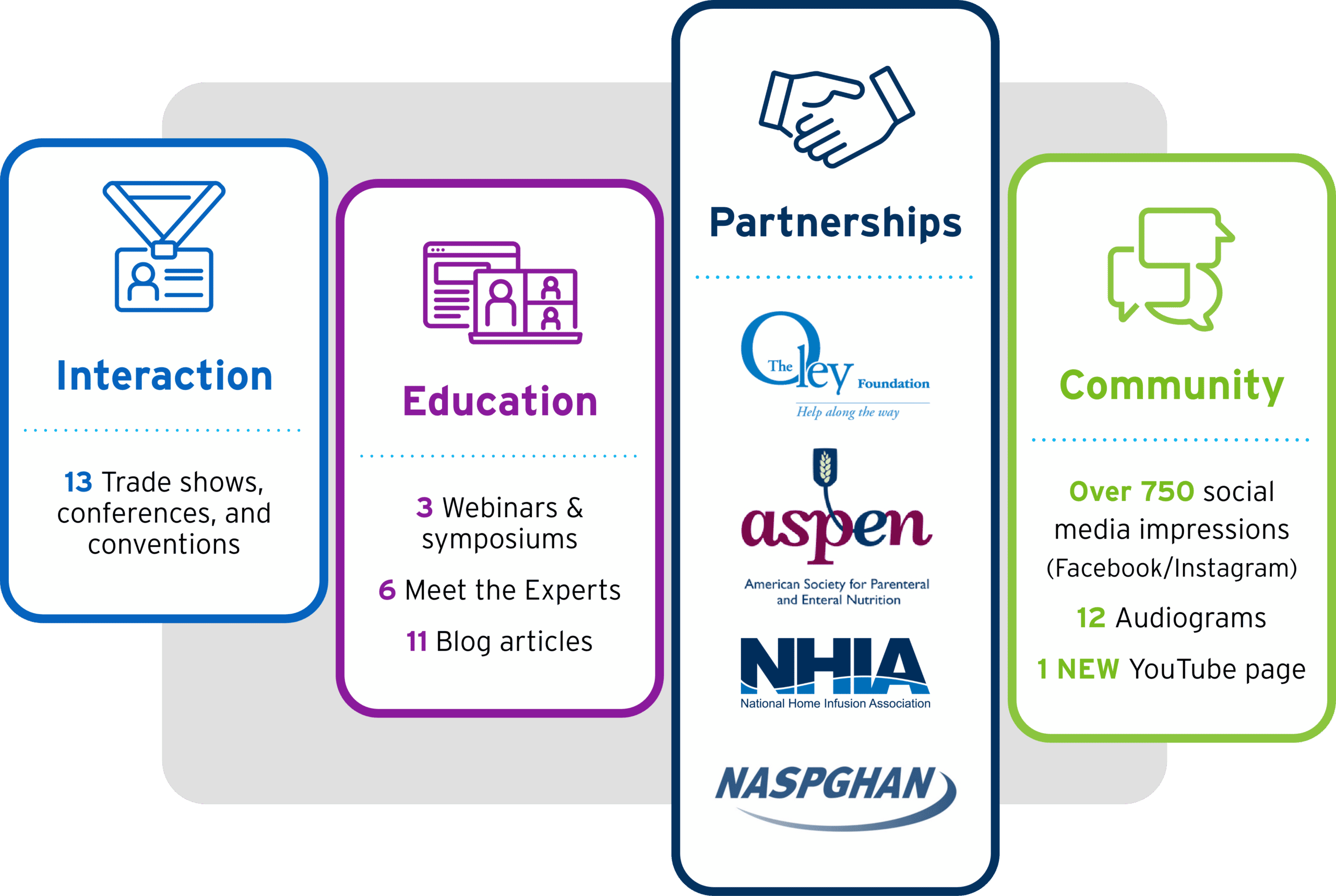
2022 was a big year for all of us here at Fresenius Kabi Nutrition and for the thousands of patients who require parenteral nutrition (PN). With more than 25,000 pediatric and adult patients requiring PN at home and more than 127,000 receiving PN in hospitals across the United States,1,2 providers have more options than ever for their patients, including soybean oil, fish oil, and multiple oil sources. We’re proud to have not just fulfilled the need for alternative lipid emulsions in 2022, but for the past year of growth in peer-to-peer interaction, partnerships, education, and social community.
-

Guidance and PN
Further guidance on the use of PN in patients with pediatric acute liver failure (PALF) were released this year, giving physicians and caregivers more definitive counsel on the best management for their youngest patients. A 2022 NASPGHAN Position Paper on the Diagnosis and Management of PALF states that “lipids should be utilized [in PN] unless a disorder of fatty acid oxidation or mitochondrial disease is suspected.”3
-

SMOFlipid: Oh baby, we’ve got news
SMOFlipid® (Lipid Injectable Emulsion, USP 20%), our one-of-a-kind, 4-oil ILE that has been used for years in adults, was approved for children 17 and under this year!4 Not only that but the FDA removed the boxed warning and limitations of use from the prescribing information. “The FDA doesn’t often remove warnings, but when it does, it requires clinical evidence proving that the drug’s risks are less severe than previous studies show.”5
“As the only provider of fish oil-containing ILEs, the pediatric indication for SMOFlipid represents an important expansion of our parenteral nutrition portfolio and allows clinicians to meet the unique nutritional needs of even our most vulnerable patients at every age.”
Gordon Sacks, PharmD, Senior Director Medical Affairs, Fresenius Kabi USA, LLC
Read more about the role omega-3s play in ILEs.
-
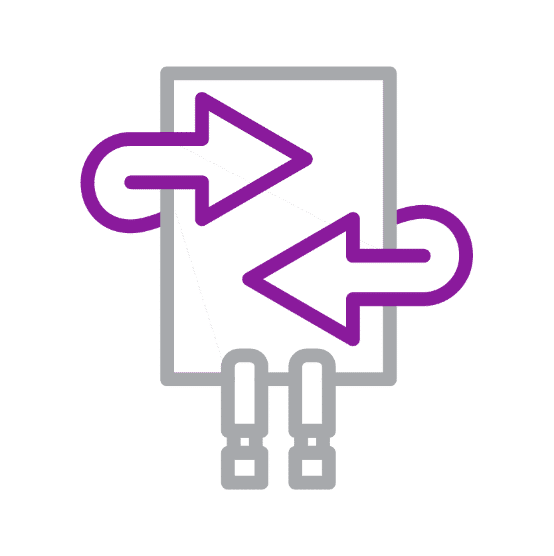
SMOFlipid is back in stock
Due to ongoing COVID-related supply chain issues and increased demand, the last few years have witnessed a shortage of PN products this year, including SMOFlipid. The good news is that it’s back in stock and available for order through your wholesaler. Or you can click here to order SMOFlipid.
-

Addressing the challenges of reimbursement with KabiCare
Fresenius Kabi Nutrition is also dedicated to helping patients get access to innovative PN products. That’s why the KabiCare Patient Support Program for Nutrition was created—to guide healthcare providers through the challenges of PN reimbursement and simplify the treatment journey for their patients on PN. Providers can contact a live representative at 1-833-KABICARE or visit kabicare.us to help them navigate the landscape of PN reimbursement with insurance benefit investigation, billing and coding support, prior authorization, and claims appeals.
-

It was great to SEE you in 2022
We’re so thankful that we could gather in-person again at ASPEN, NASPGHAN, Hot Topics, and many other conferences, educational sessions, and speaker programs. We look forward to seeing you in the future! If you want to learn more about our clinical nutrition offerings or would like to schedule something for your team, reach out to us or your PN Sales Specialist.
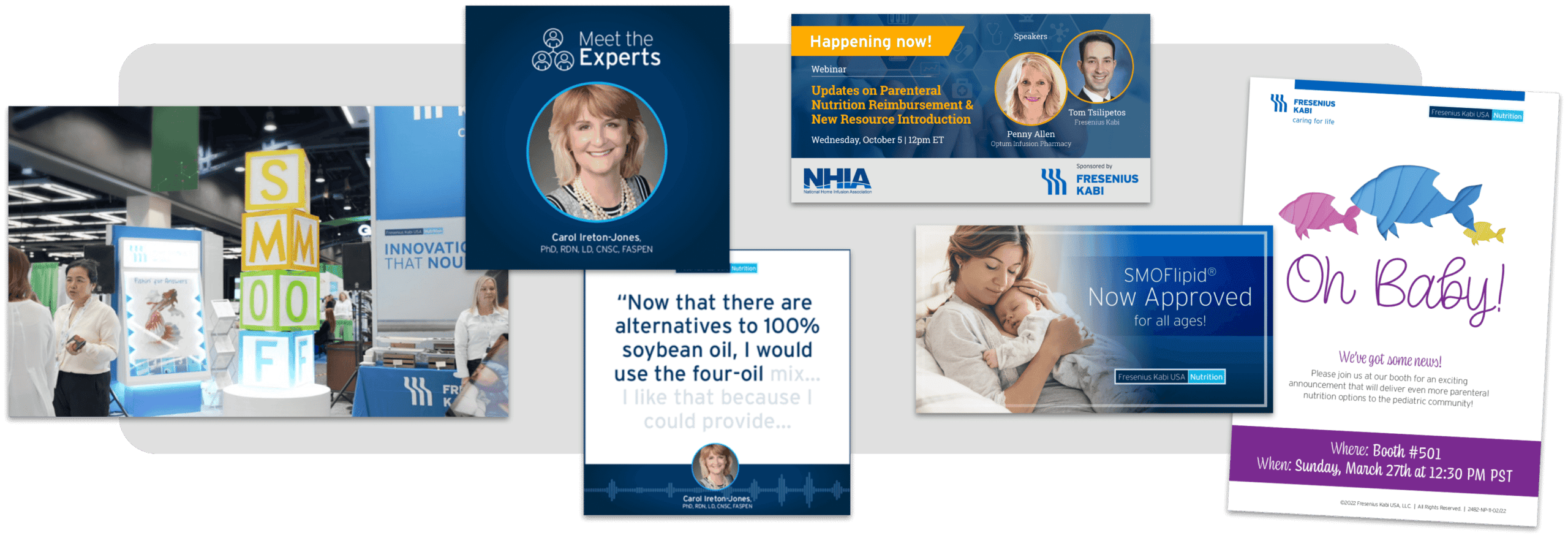
What’s next?
In 2023, we’re welcoming one of our original PN products back to the Fresenius Kabi family. In the meantime, we’ll continue driving advancements that will help nourish patients at every age and stage of life. Stay tuned!
INDICATIONS AND USAGE
SMOFlipid is indicated in adult and pediatric patients, including term and preterm neonates, as a source of calories and essential fatty acids for parenteral nutrition (PN) when oral or enteral nutrition is not possible, insufficient, or contraindicated.
IMPORTANT SAFETY INFORMATION
For intravenous infusion only into a central or peripheral vein. Use a non-vented non-DEHP 1.2 micron in-line filter set during administration. Recommended dosage depends on age, energy expenditure, clinical status, body weight, tolerance, ability to metabolize and eliminate lipids, and consideration of additional energy given to the patient. The recommended dose for adults and pediatrics is shown in Table 1. For information on age-appropriate infusion rate, see the full prescribing information. SMOFlipid Pharmacy Bulk Package is only indicated for use in pharmacy admixture programs for the preparation of three-in-one or total nutrition admixtures. Protect the admixed PN solution from light.
Table 1: Recommended Adult and Pediatric Dosage
| Age | Nutritional Requirements | |
|---|---|---|
| Initial Recommended Dosage | Maximum Dosage | |
| Birth to 2 years of age (including preterm and term neonates) | 0.5 to 1 g/kg/day | 3 g/kg/day |
| Pediatric patients 2 to <12 years of age | 1 to 2 g/kg/day | 3 g/kg/day |
| Pediatric patients 12 to 17 years of age | 1 g/kg/day | 2.5 g/kg/day |
| Adults | 1 to 2 g/kg/day | 2.5 g/kg/day |
SMOFlipid is contraindicated in patients with known hypersensitivity to fish, egg, soybean, peanut, or any of the active or inactive ingredients, and severe disorders of lipid metabolism characterized by hypertriglyceridemia (serum triglycerides >1,000 mg/dL).
Clinical Decompensation with Rapid Infusion of Intravenous Lipid Emulsion in Neonates and Infants: Acute respiratory distress, metabolic acidosis, and death after rapid infusion of intravenous lipid emulsions have been reported.
Parenteral Nutrition-Associated Liver Disease: Increased risk in patients who received parenteral nutrition for greater than 2 weeks, especially preterm neonates. Monitor liver tests; if abnormalities occur consider discontinuation or dosage reduction.
Hypersensitivity Reactions: Monitor for signs or symptoms. Discontinue infusion if reactions occur.
Risk of Infections, Fat Overload Syndrome, Refeeding Syndrome, Hypertriglyceridemia, and Essential Fatty Acid Deficiency: Monitor for signs and symptoms; monitor laboratory parameters.
Aluminum Toxicity: Increased risk in patients with renal impairment, including preterm neonates.
Most common adverse drug reactions (≥5%) from clinical trials in adults were nausea, vomiting, and hyperglycemia. Most common adverse drug reactions (≥5%) from clinical trials in pediatric patients were anemia, vomiting, increased gamma-glutamyltransferase, and nosocomial infection.
To report SUSPECTED ADVERSE REACTIONS, contact Fresenius Kabi USA, LLC at 1-800-551-7176, option 5, or FDA at 1-800-FDA-1088 or www.fda.gov/medwatch.
This Important Safety Information does not include all the information needed to use SMOFlipid safely and effectively. Please see full prescribing information, for intravenous use at www.FreseniusKabiNutrition.com/SMOFlipidPI.
References: 1. Mundi MS, Pattinson A, McMahon MT, Davidson J, Hurt RT. Prevalence of home parenteral and enteral nutrition in the United States. Nutr Clin Pract. 2017;32(6):799-805. 2. Guenter P, Blackmer A, Malone JM, et al. Update on use of enteral and parenteral nutrition in hospitalized patients with a diagnosis of malnutrition in the United States. Nutr Clin Pract. 2022;37:94-101. 3. Squires JE, Alonso EM, Ibrahim SH, et al. North American Society for Pediatric Gastroenterology, Hepatology, and Nutrition Position Paper on the Diagnosis and Management of Pediatric Acute Liver Failure. J Pediatr Gastroenterol Nutr. 2022;74(1):138-158. 4. SMOFlipid Prescribing Information, Fresenius Kabi USA, LLC. 2022. 5. Llamas M. Black box warnings. Drugwatch. https://www.drugwatch.com/fda/black-box-warnings. Accessed November 2, 2022.
3577-SMF-08-06/23
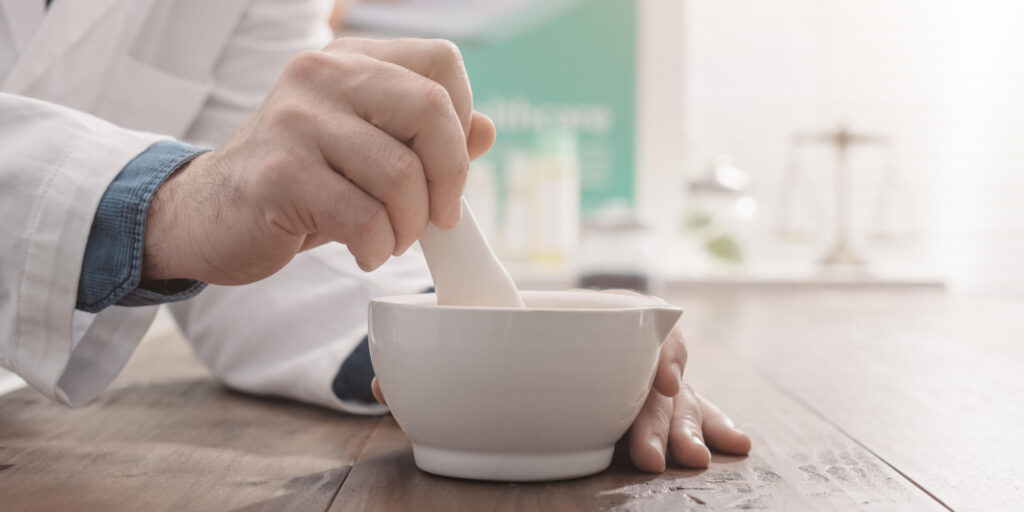
Pharmacists: integral members of the nutrition care team
Pharmacists are on the frontlines of healthcare as advocates for their patients and are among the most accessible members of the healthcare team.1 In fact, according to investigators in a nationwide geographic information systems analysis, “nearly 90% of Americans live within five miles of a community pharmacy.”2
The face of neighborhood healthcare
Patients come to know and trust their local pharmacist with their health and medication management. That’s why pharmacies are often recognized as “the face of neighborhood healthcare.”3 But pharmacists are also critical healthcare members in hospitals, community health centers, and long-term care facilities. Let’s take a “behind-the-scenes” look at the many roles these pharmacists play in caring for their patients.
Pharmacists in clinical practice are tasked with verifying and dispensing medication orders, recommending appropriate dose adjustments, and communicating with other members of the healthcare team to help ensure patient safety. And some are involved in the management of clinical nutrition, including parenteral nutrition (PN). In order to prepare and compound PN, pharmacists must undergo special training that includes competency assessments and the completion of a learning program associated with PN ordering and preparation.4 Some pharmacists become Board Certified Nutrition Support Pharmacists (BCNSP) and must become recertified every seven years by passing the BPS Nutrition Support Pharmacy Recertification Exam or by earning 100 hours of continuing education credit through Purdue University College of Pharmacy.5
Pharmacists in clinical practice are tasked with verifying and dispensing medication orders, recommending appropriate dose adjustments, and communicating with other members of the healthcare team to help ensure patient safety.
An integral part of the multidisciplinary nutrition care team
“Pharmacists with adequate clinical training and expertise in PN therapy can have pivotal roles in the care of patients receiving PN therapy.”6 They’re “an integral part of the multidisciplinary nutrition care team.”4 They play a central role in the final stages of the PN process and are responsible for reviewing, transcribing, preparing, and compounding PN.4,7 PN is compounded manually or with the use of an automated compounding device (ACD) using sterile compounding techniques.4,7 Manual compounding is often labor-intensive and requires multiple manipulations of infusion equipment that can contaminate the final admixture.8 Though not guaranteed to be error-free, using an ACD is associated with improved compounding accuracy and reduced contamination.8 Beyond these responsibilities, a pharmacist’s roles can also include monitoring patients’ response to PN therapy; supervising home parenteral nutrition (HPN) programs; educating patients, caregivers, and other healthcare professionals on nutrition support; and conducting PN-related research and quality improvement activities.6
“The ultimate goal is to reduce PN-related medication errors”4
PN is a complex, high-alert medication with the potential to cause errors that can lead to patient harm.9-11 The gap analysis by Boullata et al estimated that monthly PN-related medication errors were reported by nearly 53% of respondents; however, 44% of respondents reported not knowing about these errors or that their organization doesn’t track these errors.11 Further, 58% did not know where in the process errors may be happening.11 That’s why pharmacists are crucial to the PN process. In their review of the PN prescription, they can prevent errors by ensuring appropriate dosing, stability, and compatibility of PN ingredients.
As a leader in clinical nutrition, Fresenius Kabi is proud to support clinicians and their patients on PN by delivering innovations that nourish at every age and stage of life. To explore our comprehensive portfolio of PN products, visit: www.FreseniusKabiNutrition.com/pn-portfolio/
References: 1. National Center for Chronic Disease Prevention and Health Promotion. A Program Guide for Public Health: Partnering with Pharmacists in the Prevention and Control of Chronic Diseases. CDC website. Published August 2012. Accessed September 23, 2022. https://www.cdc.gov/dhdsp/programs/spha/docs/pharmacist_guide.pdf. 2. Berenbrok LA, Tang S, Gabriel N, et al. Access to community pharmacies: A nationwide geographic information systems cross-sectional analysis [published online ahead of print, 2022 Jul 15]. J Am Pharm Assoc (2003). 2022;S1544-3191(22)00233-3. 3. National Association of Chain Drug Stores. Pharmacies: The Face of Neighborhood Healthcare. NACDS website. Accessed September 23, 2022. https://nacds.morningconsultintelligence.com. 4. Boullata JI, Holcombe B, Sacks G, et al. Standardized Competencies for Parenteral Nutrition Order Review and Parenteral Nutrition Preparation, Including Compounding: The ASPEN Model. Nutr Clin Pract. 2016;31(4):548-555. 5. Pharmacy Students. Board Certified Nutrition Support Pharmacist (BCNSP). Pharmacy Students website. Accessed October 13, 2022. https://www.pharmacystudents.org/pharmacist-certification/board-certified-nutrition-support-pharmacist-bcnsp. 6. Katoue MG. Role of pharmacists in providing parenteral nutrition support: current insights and future directions. Integr Pharm Res Pract. 2018;7:125-140. 7. Boullata JI. Overview of the parenteral nutrition use process. JPEN J Parenter Enteral Nutr. 2012;36(2 Suppl):10S-13S. 8. Iredell B, Mourad H, Nickman NA, et al. ASHP Guidelines on the Safe Use of Automated Compounding Devices for the Preparation of Parenteral Nutrition Admixtures. Am J Health Syst Pharm. 2022;79(10):730-735. 9. Institute for Safe Medication Practices (ISMP). ISMP Guidelines for Safe Preparation of Compounded Sterile Preparations; 2016. 10. Guenter P, Ayers P, Boullata JI, Gura KM, Holcombe B, Sacks GS. Parenteral Nutrition Errors and Potential Errors Reported Over the Past 10 Years. Nutr Clin Pract. 2017;32(6):826-830. 11. Boullata JI, Guenter P, Mirtallo JM. A parenteral nutrition use survey with gap analysis. JPEN J Parenter Enteral Nutr. 2013;37(2):212-222.
3411-NP-08-10/22

Spotlight: OHSU’s nutrition support team (NST)
A successful NST in action
Having an established NST that focuses on evaluating and managing clinical nutrition for critically and chronically ill patients has tremendous value in ensuring the patients’ general quality of care. More than 30% of patients in the intensive care unit are reported to be malnourished which impacts clinical outcomes and length of stay in the hospital.1 NSTs are an additional layer in the treatment continuum that helps to ensure patients receive appropriate nutritional support to help prevent and treat malnutrition.2 NSTs can be found in various settings, including hospitals, home healthcare, and long-term care facilities.3
“[An] NST has a central role in the management of patients with complex nutritional therapy in the inpatient and outpatient setting, during the hospital stay and beyond.”2
We wanted to see how an NST operates in conjunction with the greater medical care team, so we talked to the team at Oregon Health and Science University (OHSU).
How long has OHSU had a nutrition support team? Who is part of the team?
OHSU’s core NST was formed about 16 years ago with Dr. Robert Martindale at the helm. Beyond being a “nutrition champion,” he’s a general surgeon and medical director of hospital nutrition services. Other members of our team include a rotating surgical nutrition resident, registered dietitians, and pharmacists who all work together to provide patients with the best nutritional support possible.
How does your team work together with the full care team?
Our team meets virtually once a week for formal nutrition support rounds where other medical doctors, physician assistants, nurse practitioners, surgical and medical residents in training, medical students, dietetic interns, and ward-registered dietitians are invited to join the discussion. We also meet at the patient’s bedside for more complex cases where patient contact is required.
Dr. Martindale leads rounds by presenting a recent patient’s nutritional challenges and allowing the full care team to engage and ask questions. This is a unique opportunity for the greater care team to achieve insight into the nutritional needs of their patients as well as offer their own expertise.
What happens after rounds?
Once the presentation is over, the NST members break away to discuss their nutritionally complex patients, most of whom are on parenteral nutrition (PN). The team determines which patients are good candidates for PN and what adjustments may be needed regarding abnormal electrolytes, impaired blood glucose control, micronutrient deficiencies, altered fluid status in patients with a fistula or short bowel syndrome, and more. The team may also review abdominal computed tomography (CT) scans to evaluate muscle mass or identify sarcopenia. Having a physician on the team who has an interest and expertise in nutrition support certainly helps broaden the knowledge of the team, which leads to optimal treatment of their complex patients.
Here at OHSU we see how valuable the NST is in our hospital setting and how beneficial it would be for most hospitals with a multidisciplinary care model.
— Robert Martindale, MD, PhD; Brittany Cummiskey, PharmD, CNSC;
Lindsay Keeney, RD, CNSC, LD; Mary Weinberg, RD, CNSC, LD
-
Thank you, OHSU, for giving your time and sharing your knowledge. We appreciate the work your team does to support patients and their journey to living healthier lives.
References: 1. Lew CCH, Yandell R, Fraser RJL, Chua AP, Chong MFF, Miller M. Association Between Malnutrition and Clinical Outcomes in the Intensive Care Unit: A Systematic Review. JPEN J Parenter Enteral Nutr. 2017;41(5):744-758. 2. Reber E, Strahm R, Bally L, Schuetz P, Stanga Z. Efficacy and Efficiency of Nutritional Support Teams. J Clin Med. 2019;8(9):1281. 3. American Society for Parenteral and Enteral Nutrition. What Is a Nutrition Support Professional?. ASPEN website. https://www.nutritioncare.org/what-is-a-NSP/. Accessed August 29, 2022.
3224-NP-08-09/22

The lowdown on lipid dosing
Lipid injectable emulsions (ILEs) are fats given intravenously to provide energy and fatty acids for patients who require parenteral nutrition (PN).1,2 There are various ILE products available on the U.S. market today, including single-oil formulations and multi-oil formulations.
Single-oil ILEs contain either soybean oil (SO) or fish oil (FO).1,2 The two-oil ILE product contains SO and olive oil (OO) while the four-oil ILE product contains SO, medium-chain triglycerides (MCT), OO, and FO.1,2 Because the composition of each ILE is different, it’s important for clinicians to understand these differences in order to prescribe a safe and appropriate dose for their patients. Now, let’s take a look at recommended dosing for these complex ILE formulations.
What is appropriate lipid dosing anyway?
For patients on PN, dosing needs differ in pediatric, neonatal, and adult populations. Appropriate dosing depends on a number of factors that the prescribing physician must consider. The recommended ILE dosage is based on the patient’s energy needs, age, weight, tolerance, clinical status, additional energy sources, and the ability to metabolize and eliminate lipids.3,4
“Unless contraindicated or in critically ill [adult] patients receiving lipid calories from propofol, I’m a firm believer in daily administration of lipid injectable emulsions (ILEs). This has always been my practice during my career in nutrition support. It’s exciting to have some newer ILEs in the U.S. market, especially when prescribing PN in the critically ill or long-term [adult] patient.”
Phil Ayers, PharmD, BCNSP, FMSHP, FASHP
Once the indication for PN and an ILE has been confirmed, the ILE dose should be ordered as the amount per day.1,2 It’s important to note that a dosage decrease may be required in patients who are receiving other lipid-containing preparations to avoid adverse effects.1
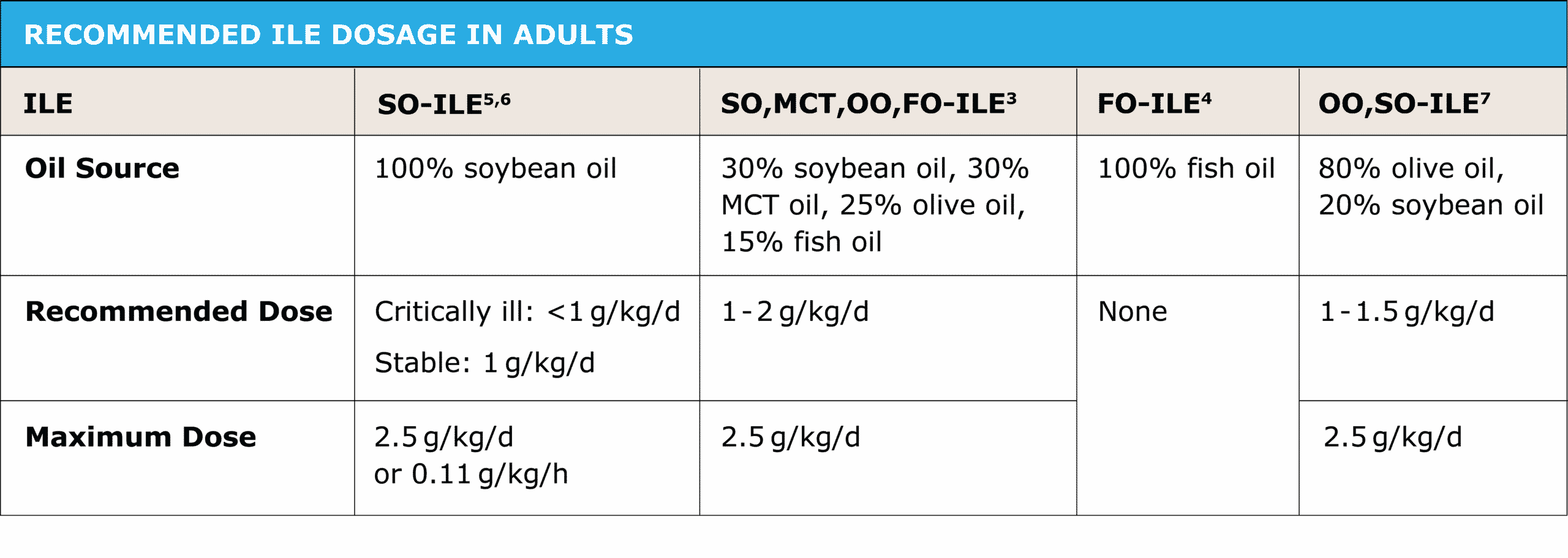
FO-ILE, fish oil ILE—Omegaven (Fresenius Kabi); ILE, lipid injectable emulsion; OO, SO-ILE, olive oil, soybean oil ILE—Clinolipid® (Baxter Healthcare Corporation); SO, MCT, OO, FO-ILE, soybean oil, medium-chain triglycerides, olive oil, fish oil ILE—SMOFlipid® (Fresenius Kabi); SO-ILE, soybean oil ILE—Intralipid® (Baxter Healthcare Corporation), Nutrilipid (B. Braun Medical, Inc.)
Chart adapted from Mirtallo JM, et al. Nutr Clin Pract. 2020;35(5):769-782.
The SO-ILE dose is based on ASPEN recommendations, whereas the dose of the other ILE products for use in adults is from the manufacturer’s information.
The consideration of daily lipid dosing
“The administration of intravenous lipid emulsions should be generally a part of PN.”8 Unfortunately, persistent shortages of PN components witnessed in the last decade have led to a tendency of practitioners to provide less than adequate dosing, which can lead to nutrient deficiencies and impaired growth and healing.9 Recent inventory for lipids has increased and is now fully stocked enabling clinicians to resume the recommended dosing practices accordingly.
“In my clinical experience, the use of daily ILE allows the clinician to reduce the amount of dextrose needed to provide adequate calories and assists in glycemic control. The literature supports that optimal glycemic control leads to positive outcomes such as a reduction in infections and length of stay.”
Phil Ayers, PharmD, BCNSP, FMSHP, FASHP
As pioneers in clinical nutrition, our innovations nourish at every age and stage of life, from hospital to home. We’re proud to be the U.S. market leader in ILEs,10 and we encourage you to contact your PN Sales Specialist about any questions you may have about ILE products. In the meantime, explore our comprehensive portfolio of innovations that nourish at: www.FreseniusKabiNutrition.com/pn-portfolio
Disclaimer: The views and opinions expressed by the expert in this article are solely those of the healthcare professional based on his experiences in the medical field and are not intended to reflect the views or opinions of Fresenius Kabi or to provide clinical practice recommendations.
References: 1. Mirtallo JM, Ayers P, Boullata J, et al. ASPEN Lipid Injectable Emulsion Safety Recommendations, Part 1: Background and Adult Considerations [published correction appears in Nutr Clin Pract. 2022 Apr;37(2):482]. Nutr Clin Pract. 2020;35(5):769-782. 2. Cober MP, Gura KM, Mirtallo JM, et al. ASPEN lipid injectable emulsion safety recommendations part 2: Neonate and pediatric considerations. Nutr Clin Pract. 2021;36(6):1106-1125. 3. SMOFlipid Prescribing Information, Fresenius Kabi USA, LLC. 2022. 4. Omegaven Prescribing Information, Fresenius Kabi USA, LLC. 2020. 5. Intralipid 20%. Package insert. Uppsala, Sweden: Fresenius Kabi; 2015. 6. Nutrilipid. Package insert. Bethlehem, PA: B. Braun Medical Inc; 2017. 7. Clinolipid. Package insert. Deerfield, IL: Baxter Healthcare Corporation; 2016. 8. Singer P, Blaser AR, Berger MM, et al. ESPEN guideline on clinical nutrition in the intensive care unit. Clin Nutr. 2019;38(1):48-79. 9. ASPEN. Appropriate Dosing for Parenteral Nutrition: ASPEN Recommendations. November 17, 2020. Accessed July 26, 2022. https://www.nutritioncare.org/uploadedFiles/Documents/Guidelines_and_Clinical_Resources/PN%20Dosing%201-Sheet-Nov%202020-FINAL.pdf. 10. Data on File; 8/1/22; calculation includes: all ILEs approved in the US.

